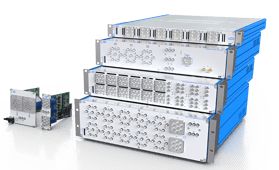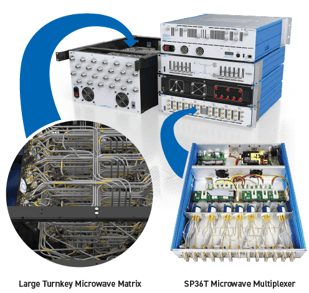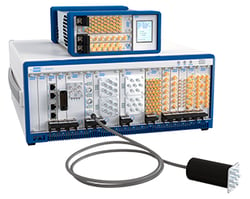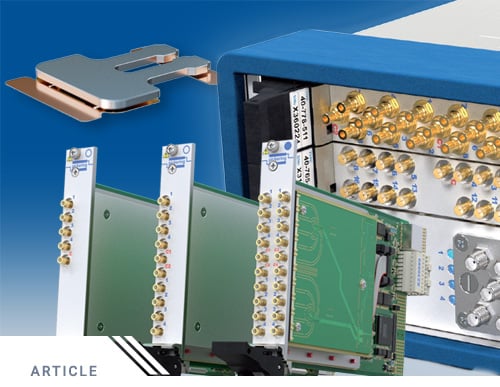Strategies for Success in Switching for RF and Microwave Test
RF and microwave testing presents unique challenges that require careful consideration and strategic planning for an effective switching system. In this article, we will examine these specific challenges and explore how different build options address them. Whether you are an experienced engineer or in your first job after college, understanding these challenges and selecting the right switching solution for your situation is crucial to ensuring a successful RF and microwave switching strategy.
For more details on RF and microwave test strategy, get our free white paper
Key Challenges for Switching in RF & Microwave Testing:
- Signal Integrity: Due to the higher frequencies and bandwidths involved in RF and microwave testing, maintaining signal integrity is paramount. Issues such as signal loss, reflections, and interference can significantly impact test results and accuracy.
- Increasing Complexity: Testing RF and microwave devices often requires intricate setups with multiple components and connections, making it challenging to ensure reliability and repeatability. Multiple channels require synchronization, calibration, and signal path management to prevent crosstalk and interference.
- Wide Frequency Ranges: RF and microwave devices operate across a wide frequency range, requiring broadband test equipment, frequency-selective components, calibration, and advanced signal processing.
- Intermodulation: Nonlinear behavior in RF components can lead to unwanted signal distortions and interference. Selecting RF components with high linearity characteristics, isolation, filtering, simulation, and modeling will help minimize nonlinear effects and reduce distortion.
- Low-Power Operation: Testing devices with low power demands sensitive measurement techniques to accurately capture and analyze weak signals.
- Space, Cost & Time Constraints: Limited space in testing environments calls for equipment that is compact or can be rack mounted. Building and maintaining RF and microwave test systems can tax internal resources and require careful management of cost and time commitments.
Addressing RF & Microwave Switching Challenges with Three Build Options:
COTS Industry-Standard Modular Switching Subsystems:
- Easy integration and scalability with standardized modules.
- Simplified maintenance with individual modules for quick replacements.
- Flexibility for reconfiguring setups with external cabling and adapters
Flexible PXI & LXI Switching Products:
-
Remote access and control for increased flexibility and efficiency.
- Support a wide range of applications with modular and scalable solutions.
- Facilitate integration with existing test systems through standardized interfaces.
Turnkey Signal Routing Subsystems:
-
Ideal for applications where performance is critical and static configurations are sufficient.
- Provides a complete switching solution tailored to specific requirements, reducing the need for in-house development.
- Custom-designed signal routing subsystem ensures optimal performance, accuracy, and reliability.
Success in navigating the specific challenges of RF & microwave switching requires a thorough understanding of the complexities and available solutions. By addressing your company-specific requirements directly regarding pros & cons, engineers can effectively navigate these complexities and more accurately choose the right build option for their situation.
For more details on RF and microwave test strategy, get our free white paper
RF & Microwave Test: What is the Optimum Strategy?







